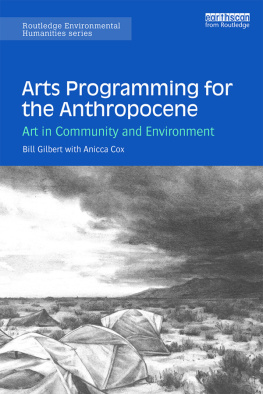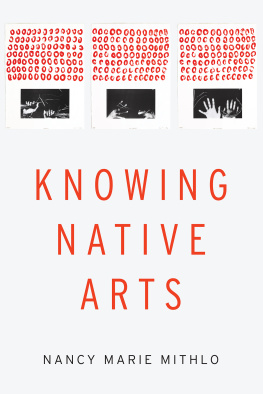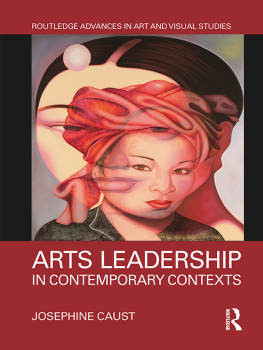Arts Programming for the Anthropocene
Arts Programming for the Anthropocene argues for a role for the arts as an engaged, professional practice in contemporary culture, charting the evolution of arts over the previous half century from a primarily solitary practice involved with its own internal dialogue to one actively seeking a larger discourse. The chapters investigate the origin and evolution of five academic field programs on three continents, mapping developments in field pedagogy in the arts over the past twenty years. Drawing upon the collective experience of artists and academicians in the United States, Australia, and Greece operating in a wide range of social and environmental contexts, it makes the case for the necessity of an update to ensure the real world relevance and applicability of tertiary arts education.
Based on thirty years of experimentation in arts pedagogy, including the creation of the Land Arts of the American West (LAAW) program and Art and Ecology discipline at the University of New Mexico, this book is written for arts practitioners, aspiring artists, art educators, and those interested in how the arts can contribute to strengthening cultural resiliency in the face of rapid environmental change.
Bill Gilbert is Emeritus Distinguished Professor of Art and Ecology and Lannan Endowed Chair of Land Arts of the American West at the University of New Mexico. He completed his undergraduate work at Swarthmore College and Pitzer College and received an MFA in Ceramics from the University of Montana.
Anicca Cox has a BA in photography from the University of New Mexico, an MA in rhetoric and composition from Humboldt State University and is currently pursuing her doctoral degree at Michigan State University in their Writing, Rhetoric, and American Cultures program.
Finally a down-to-earth, practical guide to navigating the challenges and opportunities of developing place-based field learning programs in the arts! Higher education has been yearning for innovative pedagogical models to address 21st century problems from interdisciplinary perspectives. This book offers a cross-cultural set of field-tested examples that are imaginative, instructive, and inspirational.
Teri Reub, University at Buffalo, USA
Part sourcebook, part institutional critique, part post-commodity road trip, Arts Programming for the Anthropocene records and analyses the legendary annual voyages of the Land Arts of the American West program, one of the most innovative learning environments in the world. It offers alternatives for students and teachers alike who are otherwise mired in what has become the universal bureaucracy of institutionalized art studies.
William Fox, Nevada Museum of Art, USA
An important book to help reimagine pedagogy and practice in the arts, Arts Programming for the Anthropocene offers insight to individuals and institutions seeking to meet contemporary challenges in a time of pressing environmental crisis.
Alan Boldon, University of Brighton, UK
Once your children have been let out of the house to explore their environments and once they have (hopefully) been educated about the complex relationship of culture to nature, this book provides the next step a much needed manual for ecological artists and educators out in the world. With encouragement to work locally, often with indigenous communities, and the story of the founding of the renowned Land Arts of the American West programs, GiIbert provides a new model for universities and art schools that successfully combines art and life.
Lucy R. Lippard, author of Undermining: A Wild Ride Through Land use, Politics and Art in the Changing West
Bill Gilbert is a leader in the field of art and environment and a champion for relevant and cooperative community engagement. Arts Programming for the Anthropocene provides a road map for how to creatively respond to our time of human species as a geological force.
Christie Davis, Program Director for Art, Lannan Foundation
Routledge Environmental Humanities
Series editors: Paul Warde (University of Cambridge, UK) and Libby Robin (Australian National University)
Editorial Board
Christina Alt, St Andrews University, UK
Alison Bashford, University of New South Wales, Australia
Peter Coates, University of Bristol, UK
Thom van Dooren, University of New South Wales, Australia
Georgina Endfield, Liverpool, UK
Jodi Frawley, University of Western Australia, Australia
Andrea Gaynor, The University of Western Australia, Australia
Christina Gerhardt, University of Hawaii at Mnoa, USA
Tom Lynch, University of Nebraska, Lincoln, USA
Iain McCalman, University of Sydney, Australia
Jennifer Newell, Australian Museum, Sydney, Australia
Simon Pooley, Imperial College London, UK
Sandra Swart, Stellenbosch University, South Africa
Ann Waltner, University of Minnesota, US
Jessica Weir, University of Western Sydney, Australia
International Advisory Board
William Beinart, University of Oxford, UK
Jane Carruthers, University of South Africa, Pretoria, South Africa
Dipesh Chakrabarty, University of Chicago, USA
Paul Holm, Trinity College, Dublin, Republic of Ireland
Shen Hou, Renmin University of China, Beijing, China
Rob Nixon, Princeton University, Princeton NJ, USA
Pauline Phemister, Institute of Advanced Studies in the Humanities, University of Edinburgh, UK
Deborah Bird Rose, University of New South Wales, Sydney, Australia
Sverker Sorlin, KTH Environmental Humanities Laboratory, Royal Institute of Technology, Stockholm, Sweden
Helmuth Trischler, Deutsches Museum, Munich and Co-Director, Rachel Carson Centre, Ludwig-Maximilians-Universitt, Germany
Mary Evelyn Tucker, Yale University, USA
Kirsten Wehner, University of London, UK
The Routledge Environmental Humanities series is an original and inspiring venture recognising that todays world agricultural and water crises, ocean pollution and resource depletion, global warming from greenhouse gases, urban sprawl, overpopulation, food insecurity and environmental justice are all crises of culture.
The reality of understanding and finding adaptive solutions to our present and future environmental challenges has shifted the epicenter of environmental studies away from an exclusively scientific and technological framework to one that depends on the human-focused disciplines and ideas of the humanities and allied social sciences.
We thus welcome book proposals from all humanities and social sciences disciplines for an inclusive and interdisciplinary series. We favour manuscripts aimed at an international readership and written in a lively and accessible style. The readership comprises scholars and students from the humanities and social sciences and thoughtful readers concerned about the human dimensions of environmental change.
Arts Programming for the Anthropocene
Art in Community and Environment
Bill Gilbert with Anicca Cox
Drawings and Illustrations by Erika Osborne

First published 2019
by Routledge
2 Park Square, Milton Park, Abingdon, Oxon OX14 4RN










